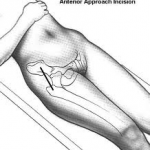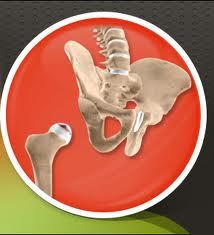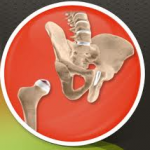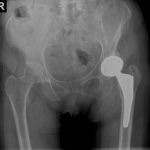WHO IS A CANDIDATE FOR ANTERIOR HIP REPLACEMENT?
Many people suffering with arthritis, hip pain, stiffness and limited hip movement can now choose minimally invasive surgery when hip replacement is the chosen treatment of the patient and their doctor.
One of the least invasive surgical options is Anterior Hip Replacement. The Anterior Approach is a proven technique that minimizes the pain and the time from surgery to recovery.
 Disclaimer: The information in this web site is for informational purposes only and is not meant to replace any doctor’s advice, evaluation or diagnosis and does not suggest any form of specific medical treatment for individual cases. Consult your doctor before starting any course of treatment.
Disclaimer: The information in this web site is for informational purposes only and is not meant to replace any doctor’s advice, evaluation or diagnosis and does not suggest any form of specific medical treatment for individual cases. Consult your doctor before starting any course of treatment.
WHAT IS ANTERIOR HIP REPLACEMENT?
The Anterior Approach to hip replacement surgery allows the surgeon to reach the hip joint from the front of the hip as opposed to the lateral (side) or the posterior (back) approach. This way, the hip can be replaced without detachment of muscle from the pelvis or femur during surgery. The surgeon can simply work through the natural interval between the muscles. The most important muscles for hip function, the gluteal muscles that attach to the pelvis and femur, are left undisturbed and, therefore, do not require a healing process to recover from surgical trauma.
The Anterior Approach to hip replacement was first performed in Europe in 1947. Since that time, the technique has been continually refined with advancing medical technology. Today, literally thousands of hip replacement patients have benefited from this minimally invasive approach in Europe and America. This anterior approach follows the lower half of the interval of the Smith-Peterson approach, making it a true anterior approach to the hip. It should not be confused with the Harding approach, which is often referred to as an anterior approach, but involves a lateral incision.
In 1996, Joel M. Matta, M.D., the John C. Wilson, Jr., Chair of Orthopedic Surgery at Good Samaritan Hospital in Los Angeles brought Anterior Hip Replacement to the United States. Dr. Matta has advanced the technique even further by co-designing a special, state-of-the-art surgical table with OSI and improving many surgical protocols for the hip replacement procedure. Having performed over 1,000 Anterior Hip Replacements himself since 1996, Dr. Matta has also been instrumental in the training of many orthopedic surgeons in this important minimally invasive approach. Dr. Matta’s views on this technique can be found at: www.hipandpelvis.com.
HOW DOES ANTERIOR HIP REPLACEMENT IMPROVE PATIENT RECOVERY?
Conventional Hip Replacement
Conventional lateral or posterior surgery typically requires strict precautions for the patient. Most patients must limit hip motion for 6 to 8 weeks after surgery. They must limit flexing of the hip to no more than 60 to 90 degrees which complicates normal activities like sitting in a chair, on a toilet seat, putting on shoes or getting into a car. Simply climbing stairs may also be more difficult during recovery.
Anterior Hip Replacement
Anterior Hip Replacement allows patients to immediately bend their hip freely and bear full weight when comfortable, resulting in a more rapid return to normal function. After surgery, patients are instructed to use their hip normally without cumbersome restrictions. In supervised therapy, patients go up and down stairs before their hospital release. Additionally, if patients are sexually active before surgery, there are no limitations on resumption of normal sexual activity after surgery.
Another advantage of the anterior approach is that for patients who require bilateral hip replacement, this can be performed during a single operative session. With the patient in the supine position (as opposed to lateral with standard techniques) both hips are simultaneously prepared and then the hips replaced successively. The muscle preservation and absent post operative restrictions also makes bilateral replacement more possible. Patients often prefer the one hospitalization and one visit to the operating room over staged hospitalizations and procedures.
The anterior approach does not limit the patient’s and surgeon’s options regarding type of hip prosthesis. Hip prostheses that are implanted with or without cement are applicable as well as all modern bearing surfaces including ultra high density polyethylene, metal and ceramic. Surface replacement arthroplasty is also possible through the anterior approach.
Possible complications of anterior hip replacement surgery include infection, injury to nerves or blood vessels, fractures, hip dislocation and the need for revision surgery.
Disclaimer: All patients are different and have varying degrees of disability prior to surgery, as well as inherent differences in their overall capabilities. The outcomes described herein speak for the majority of patients with normal hip deterioration and average capabilities for their age group.


